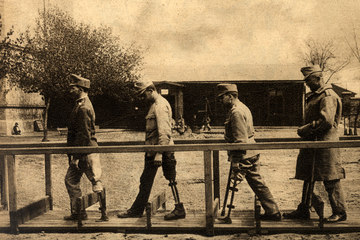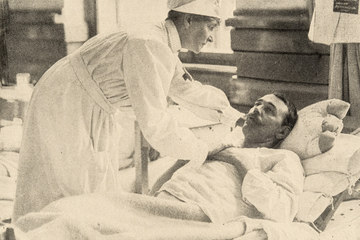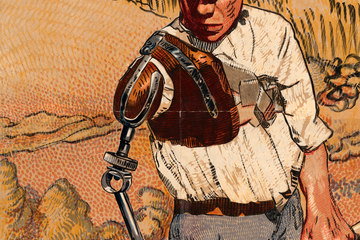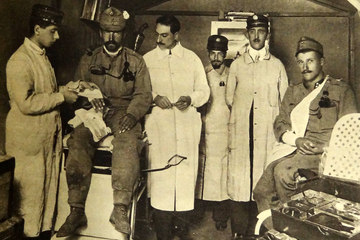Verena Pawlowsky
Discontent and misery: war invalids get organised
Directly after the end of the war, the invalids began to organise themselves into societies and associations. One of their leading supporters was the Central Association, which also represented war widows, thus demonstrating the civilian character of the Austrian invalid movement.
Forms of war injury
Men with amputations and the blinded were in the minority among war invalids. Many suffered under stiff joints, lameness and pain caused by shot wounds. The great majority however contracted tuberculosis.
Heroes or victims? War invalids and their impact on general awareness
War invalids were a conspicuous reminder of the misery of the war and of defeat at the end of it, thus always aroused very strong emotions and had to face being blamed for a great deal.
Work for war invalids
Helping war invalids to become employable again was not enough. Hence action was taken already during the war in order to re-integrate them in practice into the work process.
From recovery to reintegration: the training of invalids
For the first time during the First World War it became clear that specific measures had to be taken to reintegrate draftee war invalids into employment again. This gave rise to the idea of training invalids.
The hospitals
After being wounded, the soldiers now had to endure what were frequently months of roaming from one hospital to another in the hinterland. Many of these facilities could make no more than provisional arrangements to care for the invalids.
The failure of private welfare
The many welfare measures organised with good intentions by private associations to help war invalids and war widows were more propagandist than of real value.
Invalid pensions, allowances for wounded veterans, state support and maintenance contributions
The Habsburg Monarchy was in no way prepared for the provision of the many war invalids. A practically impenetrable jungle of improvised measures lasting until the end of the war proved hardly adequate to regulate this agenda.









